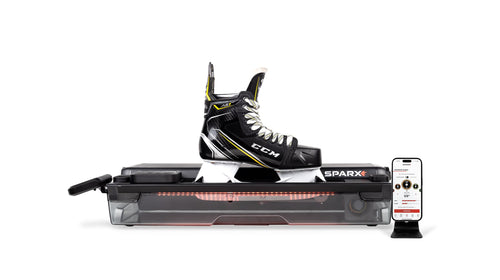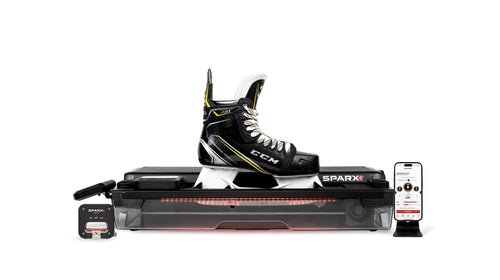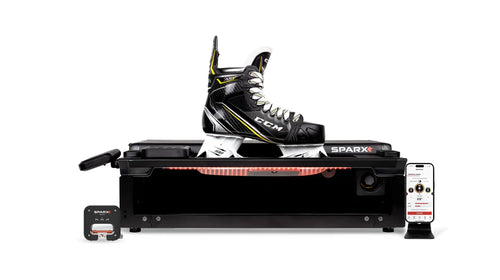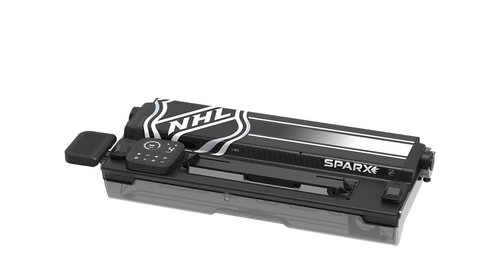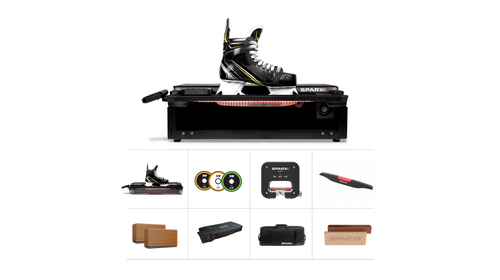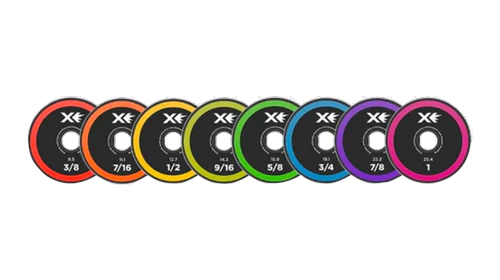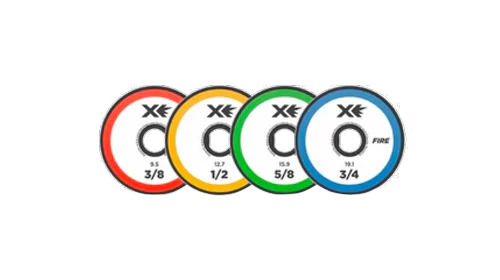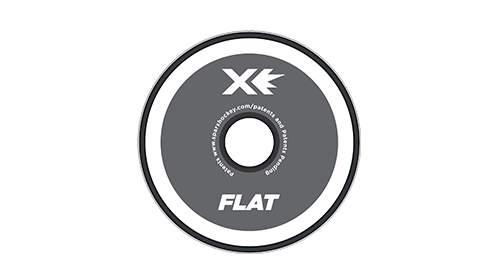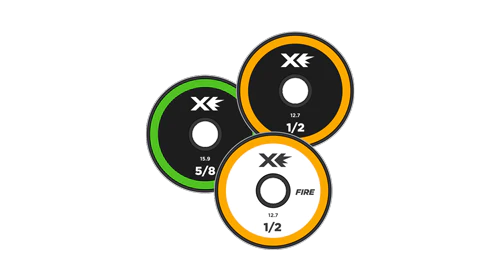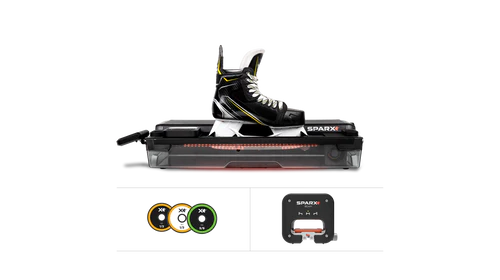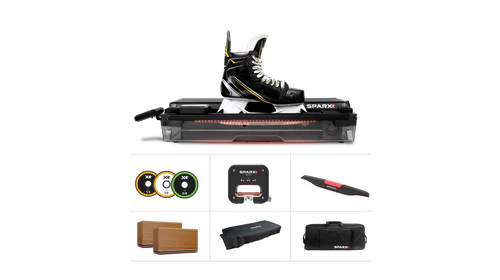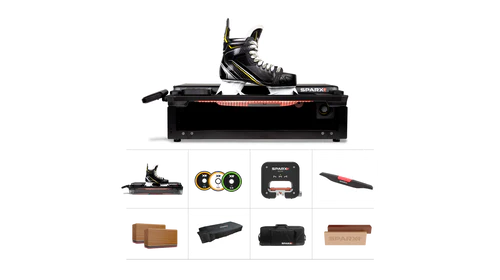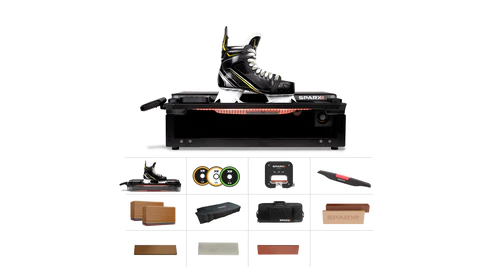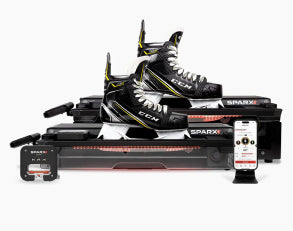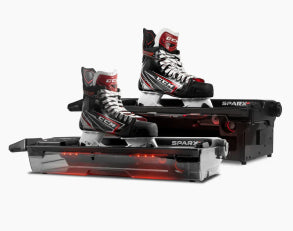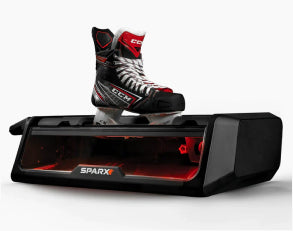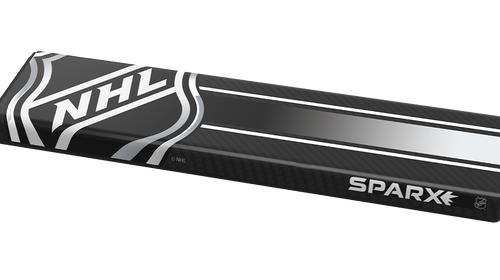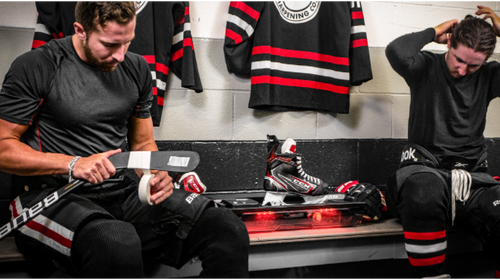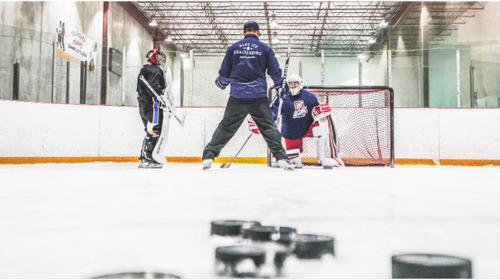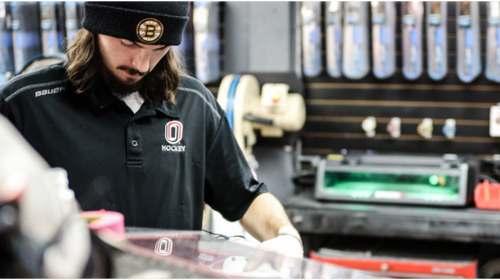
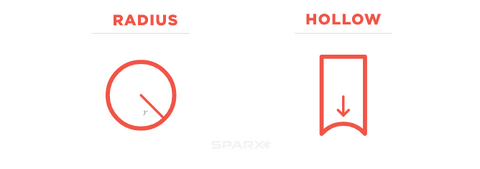
You may have gone into your local hockey shop to get your skates sharpened, and the guy behind the counter asks, "What hollow do you want?" You start to panic and have no idea what he is talking about, so you quickly blurt out, "The regular."
It's a very common answer to an important question, but its not the correct answer. Choosing the correct hollow is an important decision in the skate sharpening process and far too often, people do not fully understand how the wrong hollow can dramatically impact your on-ice performance. To fully get the benefits of a perfect skate sharpening you must first understand the concept of Radius of Hollow or RoH. Radius is the distance from the center of a circle to its outer edge (a measurement) and Hollow is a cut or depression in something. In the case of skate sharpening, it’s the concave groove that is ground into the bottom of the skating surface. So when someone asks about Radius of Hollow, or simply "Hollow" they are referring to the depth of the cut ground into the bottom of our blade.

The bottom surface of the skate blade, the one that contacts the ice, is the skating surface. The basic idea, at a high level, is the flatter this skating surface is, all other factors remaining equal, the faster the skate will glide on ice. A perfectly flat skating surface would therefore be ideal for maximum speed; unfortunately, in hockey and figure skating, the skaters also need to turn and stop. To make it possible to turn and stop, a concave profile (the radius of hollow) is ground into the length of the skating surface. This concave surface, or more specifically the edges of this surface, provide the skater with lateral (side to side) bite or grip in the ice that makes turning and stopping possible (or at least a lot easier).

So, how does Radius of Hollow affect skating performance? Which Radius of Hollow should you choose? The amount of bite or grip that a player feels in the ice is relative to the depth of the Radius of Hollow. The deeper Radius of Hollow shown on the left above has greater grip in the ice than the shallow Radius of Hollow show on the right. There is a trade-off however when choosing a deeper hollow. A deeper Radius of Hollow will cause the skate blade edges to penetrate deeper into the ice resulting in greater gliding resistance. This means that a deeper cut feels slower to the player when skating in a straight line.
There are additional factors that dictate how an Radius of Hollow behaves on the ice. Because the grip in the ice is related to how deeply the skate blade penetrates the ice, a player’s weight also plays a big role in selecting the correct Radius of Hollow.

The typical youth hockey players (less body weight) are comfortable with a 1/2” Radius of Hollow and senior players (high school and up, generally heavier) are more comfortable with a 5/8” Radius of Hollow.
If you are unsure about which Radius of Hollow to try, you should try the above Radius of Hollow recommendation for your age/weight and then experiment with more grip or more glide by trying different Radius of Hollows.

Some players prefer greater bite (smaller Radius of Hollow, for example, 1/2" or smaller fraction) in the ice because they feel it allows for:
- Harder and more aggressive turns
- Greater bite in the ice for acceleration
- Greater grip in the ice when, for example, battling for position in front of the net
- For goalies, a deeper profile is often desired to facilitate pushing off and moving quickly around the crease

Other players prefer less bite (a larger Radius of Hollow, for example 5/8" or larger fraction) in the ice because they feel that a flatter profile:
- Retains sufficient edge to still stop and turn
- Provides greater forgiveness in the ice and the ability slide a bit laterally when making quick changes in direction or drifting moves (e.g. lining up a one-timer)
- Results in less friction and thus more speed when gliding
- Causes less fatigue because there is less friction to overcome .
An interesting fact worth noting is that NHL players tend to, on average, skate on much flatter Radius of Hollows than your typical recreational player. This just goes to show that, on average, as players get heavier and more skilled they learn to use their edges more efficiently and sacrifice grip for improved glide. But choosing the correct Radius of Hollow is truly a personal preference and we highly recommend experimenting with various Radius of Hollows to find the size that feels right to you.
The below is a full look at the various Radius Of Hollow options offered by Sparx Hockey so you can see where each Radius of Hollow falls on the Grip vs. Glide scale.

